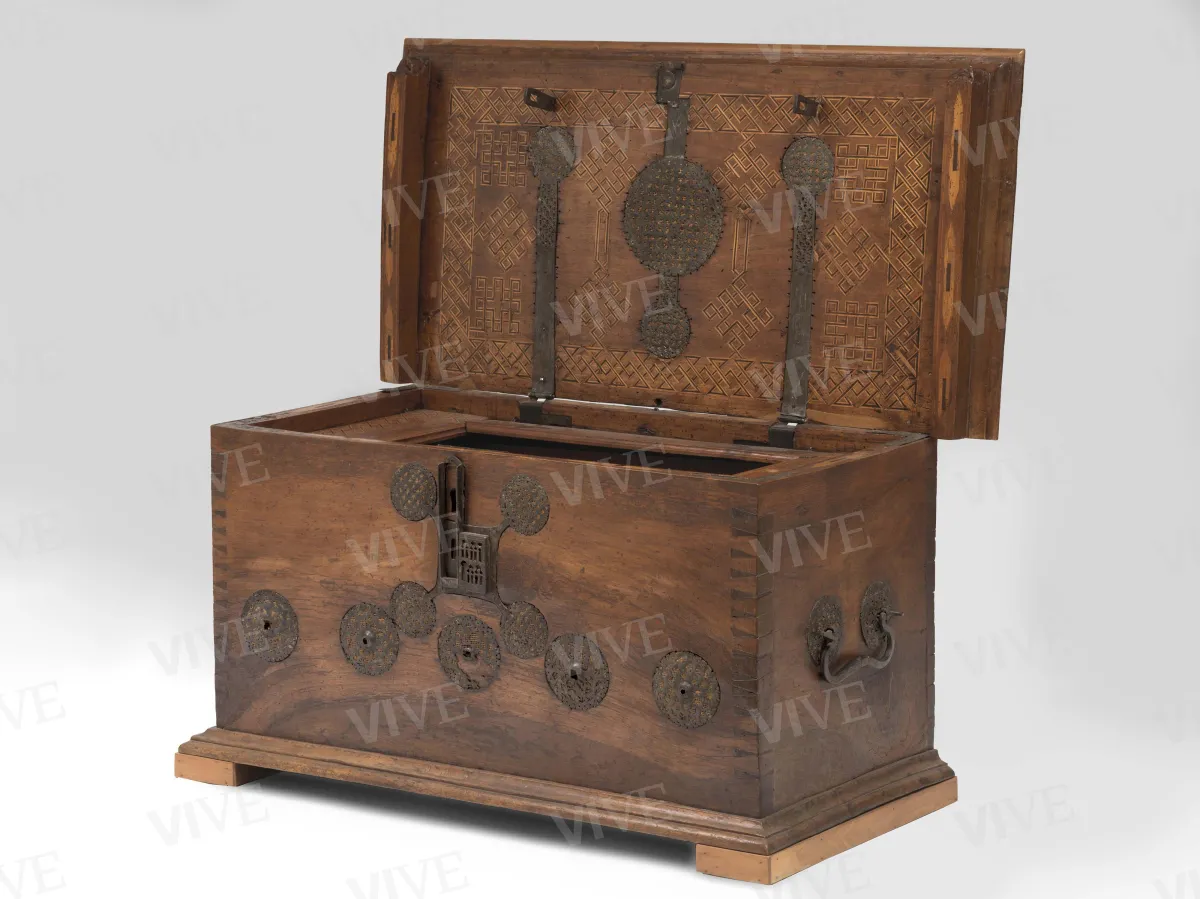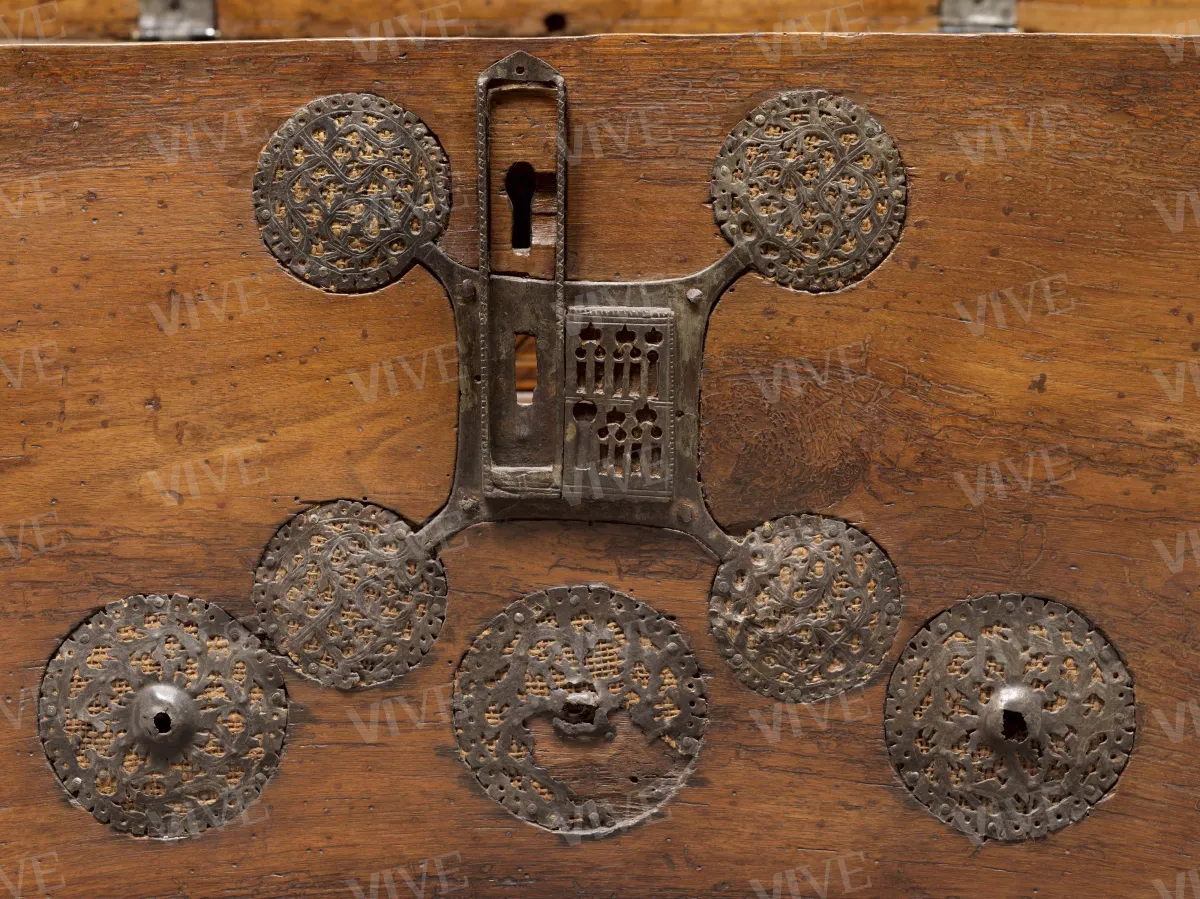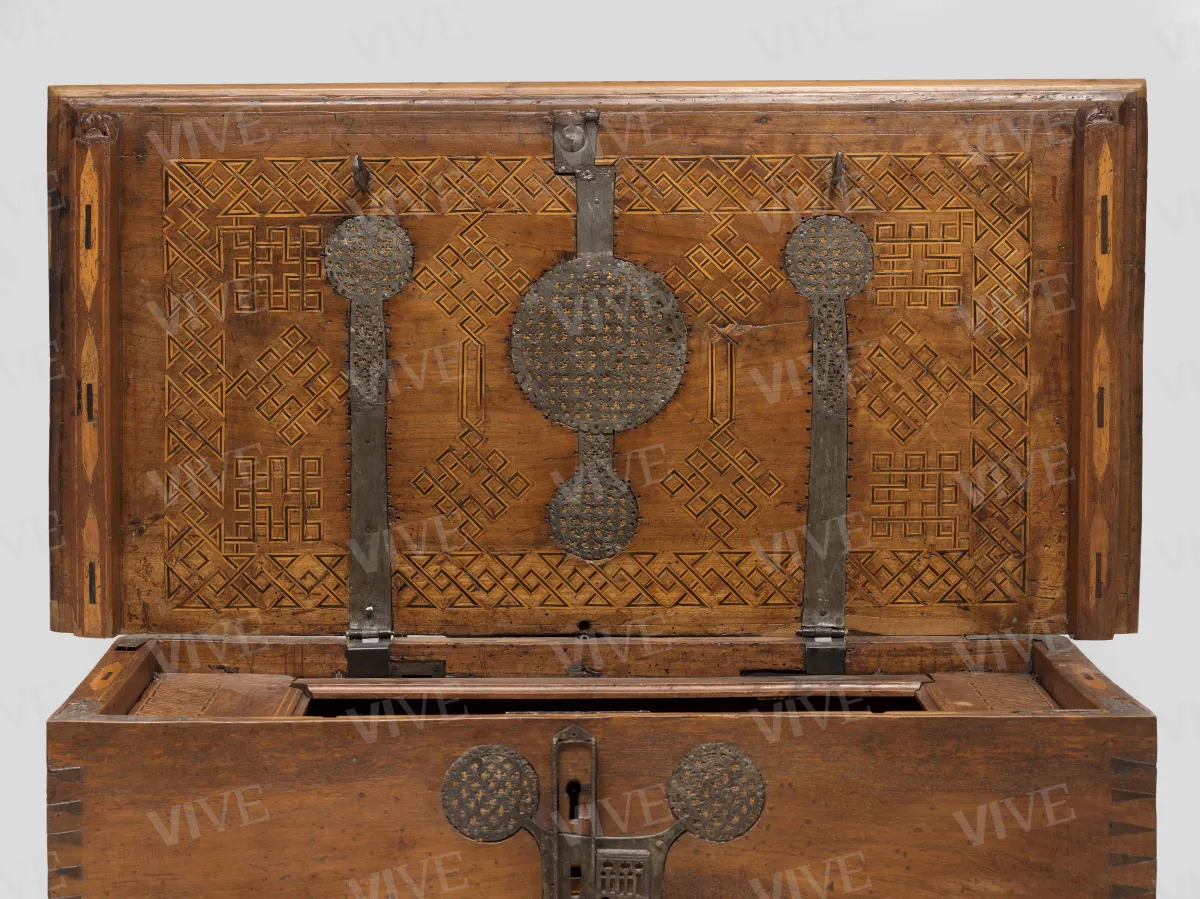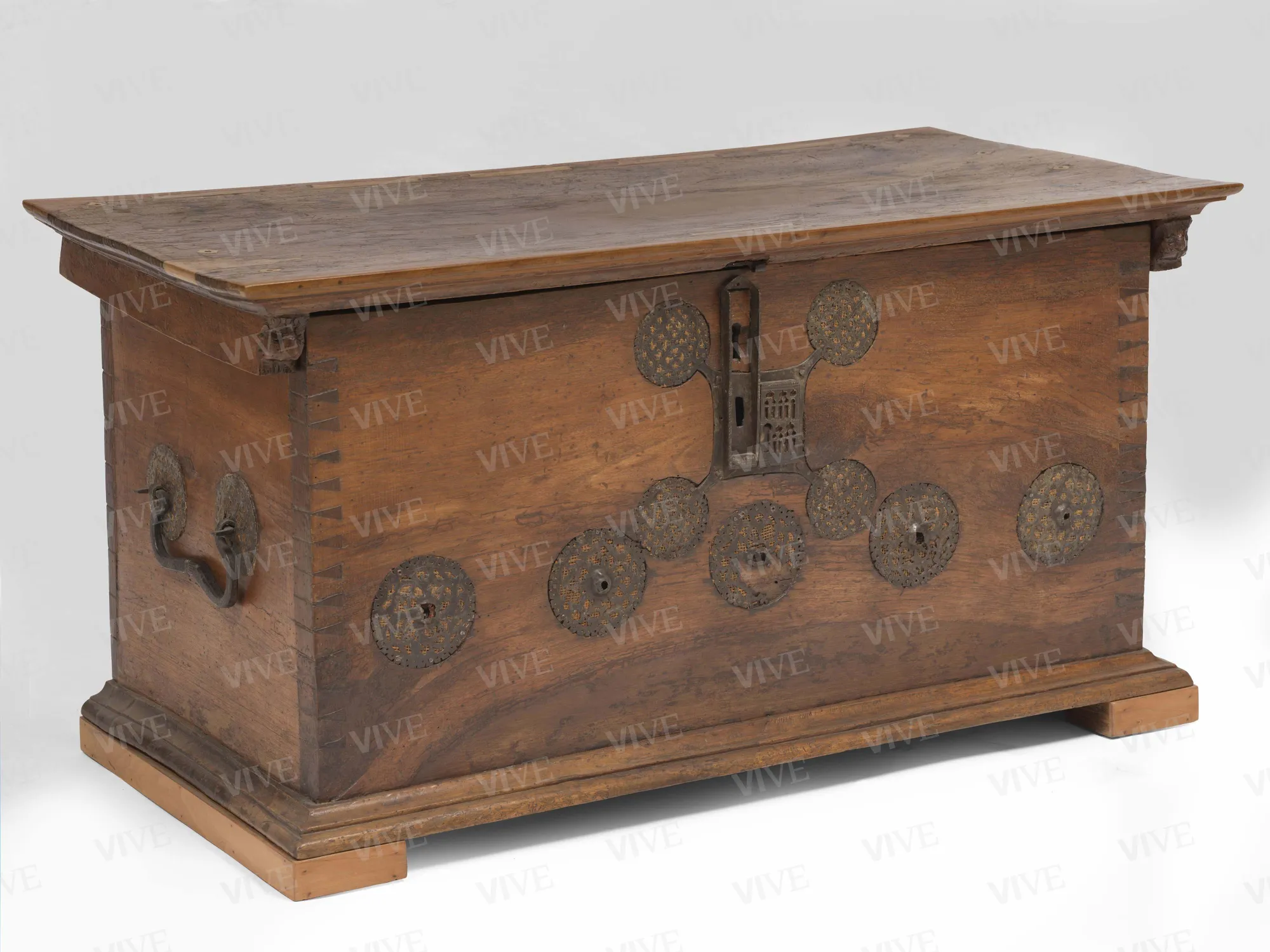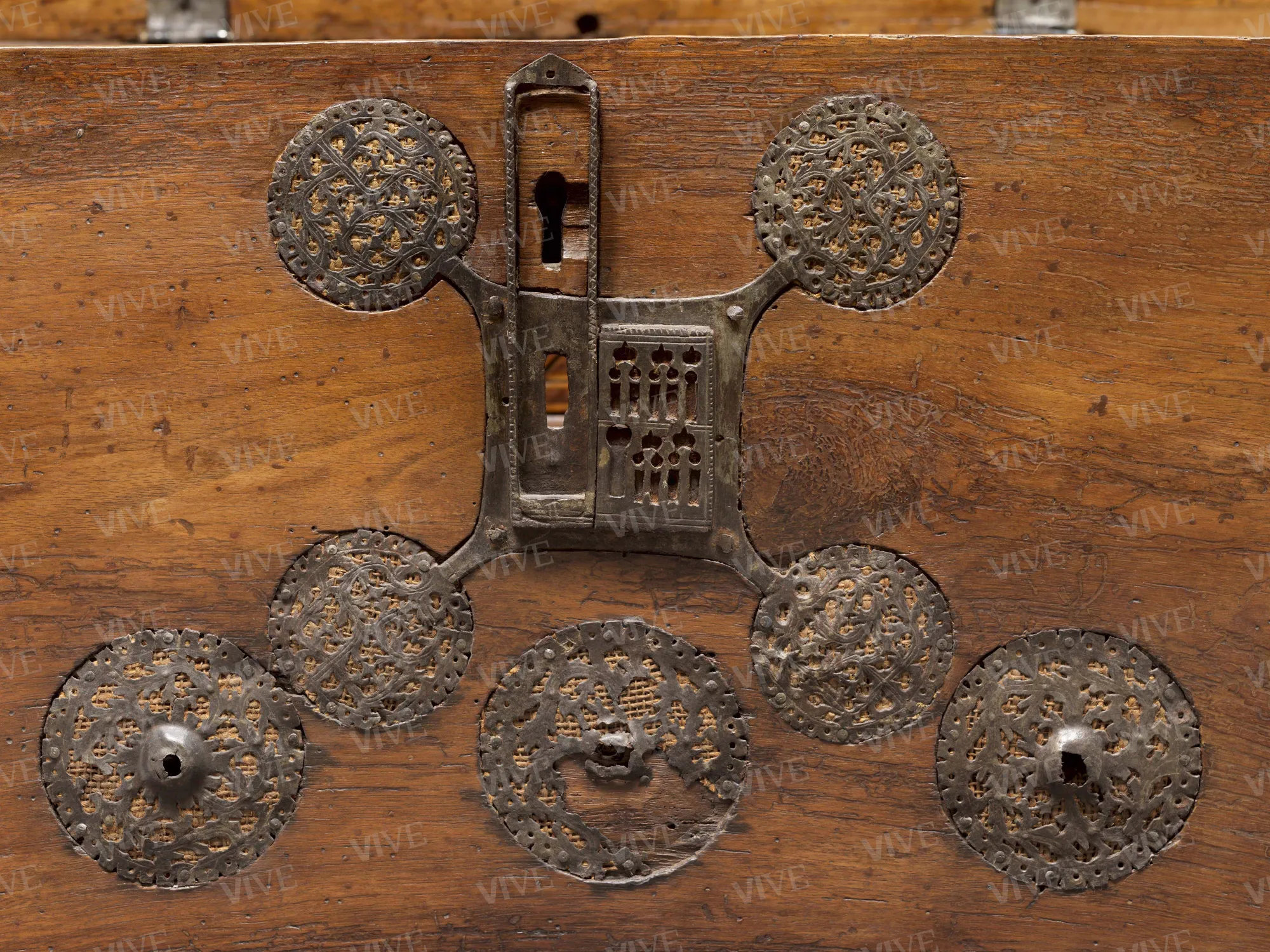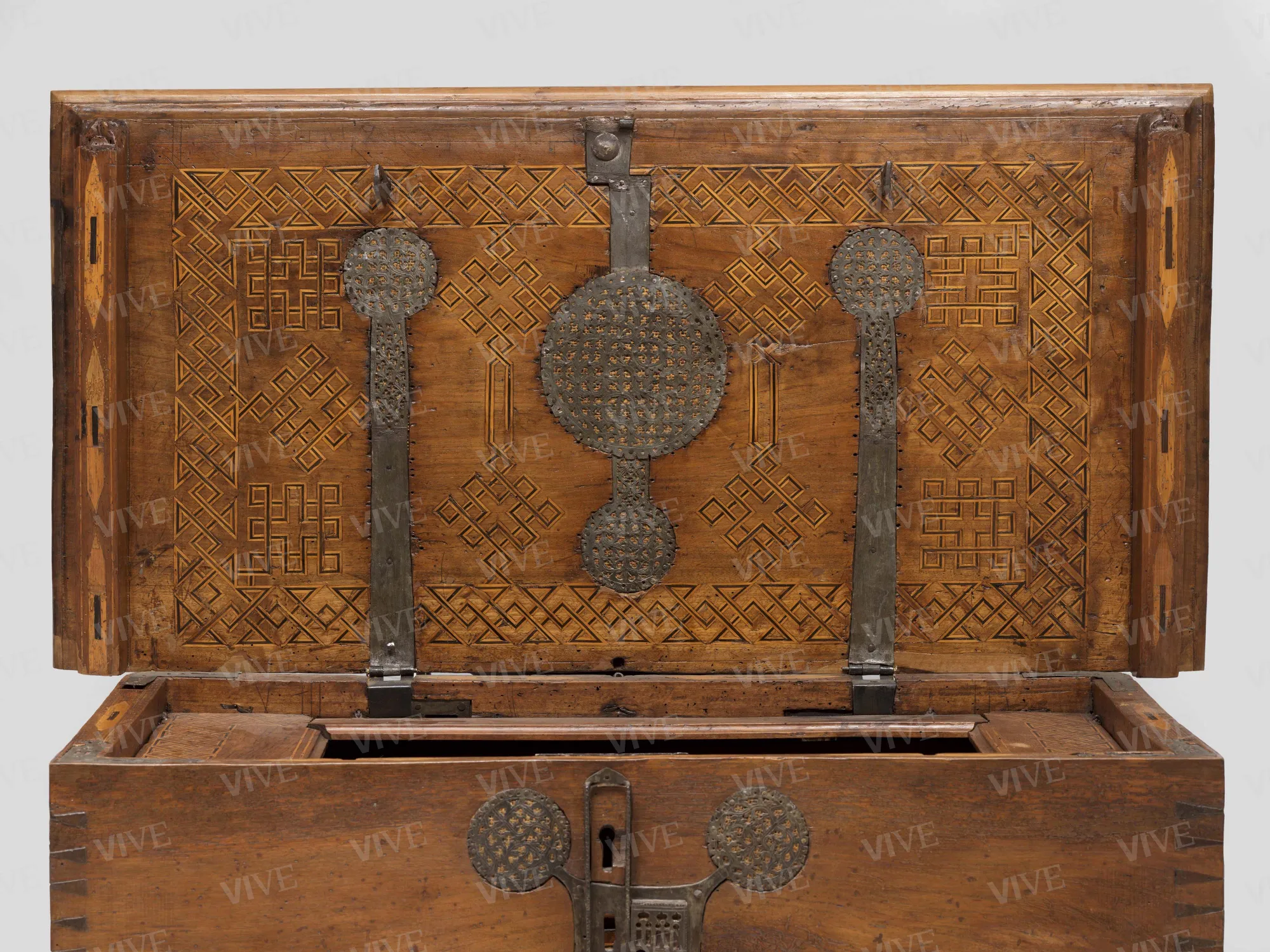Chest
Lombardy workshop Late-15th–early-16th century
Attested in important collections in Italy and abroad, chests of this type—characterized by elaborate metal finials, inlaid geometric decorations, and drawers—have been at the center of a debate regarding their geographic origins, with hypotheses ranging from Germany to Spain to northern Italy. Scholars now agree in attributing their construction to workshops active in Lombardy between the fifteenth and sixteenth centuries.
Attested in important collections in Italy and abroad, chests of this type—characterized by elaborate metal finials, inlaid geometric decorations, and drawers—have been at the center of a debate regarding their geographic origins, with hypotheses ranging from Germany to Spain to northern Italy. Scholars now agree in attributing their construction to workshops active in Lombardy between the fifteenth and sixteenth centuries.
Details of work
Catalog entry
This chest, whose provenance is unknown, was made of walnut planks assembled using dovetail joints. On the outside, it features metal finials that include a lock that branches into four circular elements and five openwork plaques, originally fitted with handles. Two handles designed to carry the chest are still on the sides, and are also attached to a circular openwork medallion. These metal plates are placed above hollows carved into the wood then covered with burlap. The lid’s ends, on the other hand, as is usual in this type of cabinet, have been reinforced by two joists with two lion protome endings. It is likely that the base, which was added during restoration work, also originally had lion heads, as seen in another example now in Berlin (Bode 1902, p. 61). The interior is structured according to a strict partitioning plan with, along the three sides, fourteen small drawers with inlaid fronts. Two additional compartments, on the other hand, are hidden and closed by flap boards. Below one of these boards are the initials “RC,” which may allude to the owner or the artisan who made the chest. The inside of the lid is also characterized by dyed-wood inlays with ornamental, geometrical modules consisting of zigzag crosses inspired by “Carthusian-style” inlays and ornamentation of the Islamic type (Windisch-Graetz 1982, pp. 99–103). The Palazzo Venezia chest belongs to a group of artifacts featuring metal inlays and frames on the exterior. There are some obvious technical and material variations, which are almost always attributable to their diversification for the market. In this sense, the most conspicuous differences regard the choice of materials used for the inlays: if in the piece under consideration various woods are juxtaposed, in others the use of bone, ivory, and mother-of-pearl is found instead, as in the sumptuous artifact from the Castello Sforzesco in Milan, similar in form to the one under consideration here but ornamentally more complex (Colle 1996, pp. 155–157n, 212). Others, on the contrary, while repeating the same structure, were not provided with inlays, as attested by the smaller chest in the Castello del Buonconsiglio in Trento (Raffaelli 1996). These types of chests were, however, essentially intended for domestic use, although they may also have been destined for churches—for example, the chest in the Museo Bagatti Valsecchi in Milan bears a Christological monogram on the back of the lid (Chiarugi 2003). The attribution of these chests to Hispano-Moorish production was essentially based on the ornamental range of the inlays, which recalled ornamentation in use in southern Spain in the fifteenth century for chests, small trunks, or ornaments, which remained fashionable until well into the sixteenth century (Aguiló Alonso 1993). In fact, the same stylemes were also widespread in northern Italy, and for this reason chests of this type have been attributed to Piedmont (Colombo 1975, table 6), Friuli, where numerous examples are still preserved (Miotti 1970, p. 9), Venice, and, especially, Lombardy. Here, in addition to the pronounced taste for inlays, the open-worked metal plates with heart-shaped handles constituting the metal window and door frames, which are similar to the equally heart-shaped ones typical of rural Lombardy, can also be found (Windisch-Graetz, p. 231). Indeed, ironwork and the construction of door and window frames was a flourishing industry in this region, especially between Milan and Brescia (Alberici 1969, p. 34). According to some, it was directly influenced by similar craft activities in the German area (Faenson 1983, cat. 135–136). It is, therefore, most probable that this chest was produced by a Lombard workshop active in the late-fifteenth and early-sixteenth centuries.
Giampaolo Distefano
Entry published on 12 February 2025
State of conservation
Though the work has been restored on different occasions, the original parts have been preserved; elements added to guarantee the chest’s stability can be seen in the base, back, and sides. The small drawers also bear traces of additions, especially in their bottoms.
References
Bode Wilhelm, Die Italienischen Hausmöbel der Renaissance, Leipzig 1902;
Alberici Clelia, Il mobile lombardo, Milano 1969;
Miotti Tito, Il mobile friulano, Milano 1970;
Silvano Colombo, L’arte del mobile in Italia, Milano 1975;
Windisch-Graetz Franz, Möbel Europas. Von der Romanik bis zur Spätgotik mit einem Rückblick auf Antike und Spätantike, München 1982;
Faenson Liubov, Italian Cassoni from the Art Collections of Soviet Museums, Leningrad 1983;
Lorenzelli Pietro, Veca Alberto (a cura di), Tra/e. Teche, pissidi, cofani e forzieri dall’Alto Medioevo al Barocco, catalogo della mostra (Bergamo, Galleria Lorenzelli, ottobre-dicembre 1984), Bergamo 1984, p. 311, fig. 417;
Aguiló Alonso María Paz, El mueble en España. Siglos XVI-XVII, Madrid 1993;
Colle Enrico, Museo d’Arti Applicate. Mobili e intagli lignei, con la collaborazione di Zanuso Susanna, Milano 1996;
Raffaelli Umberto, in Raffaelli Umberto (a cura di), Oltre la porta. Serratura, chiavi e forzieri dalla preistoria all’età moderna nelle Alpi orientali, catalogo della mostra (Trento, Castello del Buonconsiglio, 13 luglio-31 ottobre 1996), Trento 1996, p. 192, n. IX;
Chiarugi Simone, in Pavoni Rosanna (a cura di), Museo Bagatti Valsecchi, I, Milano 2003, p. 109, n. 45.


